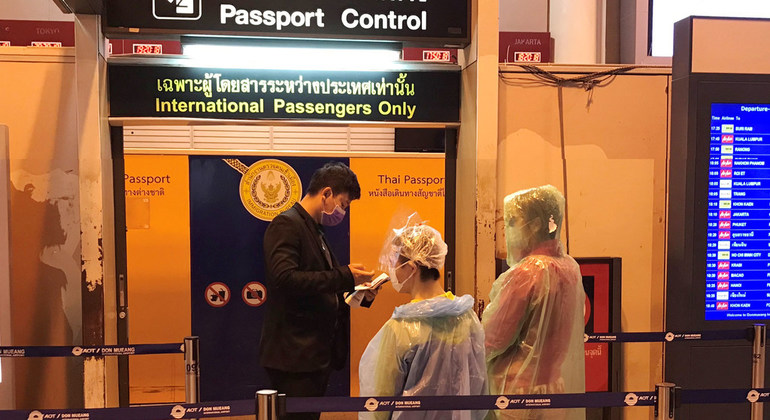“We’re not seeing a dramatic increase in transmission outside China,” Dr. Michael Ryan, the World Health Organization’s (WHO) Health Emergencies Programme chief, said, while urging against making hasty assessments.
As of 4pm on Thursday in Geneva, there were 46,550 infections from COVID-19, the overwhelming majority in China, WHO reported.
Of the 1,369 deaths from the coronavirus to date, all but two have been in China.
In Hubei province, the epicentre of the outbreak, 13,332 cases have been clinically confirmed.
Outside China, there have been 447 cases from 24 other countries and two deaths; one in the Philippines and another in Japan.
The biggest cluster outside China is on the Diamond Princess cruise ship, which is in quarantine in Yokohama port, Japan.
To date, 218 passengers on board have tested positive for COVID-19, Dr. Ryan said.
Other cruise ships in the South China Sea continue to be affected by fears that they may be carrying the virus.
Routine testing ‘showed no COVID-19 activity’
Speaking to journalists, Dr. Ryan explained that routine winter testing of patients with chest ailments in hospitals in China, Singapore and Hong Kong had not indicated widespread COVID-19 transmission.
“In emergency rooms and as part of normal winter respiratory disease surveillance, they’ve been actively testing thousands of samples that are not suspect cases of COVID,” he said.
“At the moment, we’re just not seeing COVID activity amongst those samples, and that would give an indication that the iceberg may not be that great – [but] it’s not a guarantee.”
Nonetheless, fears that only a fraction of cases were being detected were “as valid as speculations in the other direction”, Dr. Ryan insisted, before adding that no specific treatments existed for patients, beyond “standard antivirals” used for previous coronavirus outbreaks, such as during the SARS epidemic in 2003.
Vaccines and new drugs would take a long time and require a huge investment of hundreds of millions of dollars, Dr. Ryan explained, before urging public and private investment to spread the risk.
Jump in infections explained by new protocol
Dr. Ryan said that the latest data showing a jump in infections reflects a change in how cases are being diagnosed and reported by Chinese authorities.
From now on in Hubei province only, trained medical professionals are authorized to classify a suspected case of COVID-19 as a clinically diagnosed case based on chest imaging, rather than having to have a laboratory confirmation, the WHO official said.
“This allows clinicians to move and report cases more quickly, not having to wait for lab confirmation, which means that people get clinical care more quickly, and also allows public health responses in terms of contact tracing and other important public health measures to be initiated.”
Cambodian cruise ship gesture welcomed
Confirmation of the latest infection tally comes after WHO Director-General Tedros Adhanom Ghebreyesus welcomed the Cambodian authorities’ decision to allow a cruise ship to dock there.
It had been reportedly denied entry elsewhere because of fears that its passengers may have contracted the virus.
“People with mild respiratory or gastrointestinal symptoms are being treated on the Westerdam by cruise doctors & 20 of those are being tested for COVID19,” the WHO chief tweeted earlier in the day.
He noted that the samples have been transported to laboratories via helicopter at Sihanoukville Seaport and that all passengers and crew remain on board in quarantine.
Three cruise ships had either experienced delayed port clearance or been denied entry to ports. Often, said the WHO chief, without an evidence-based risk assessment.
“WHO stands ready to provide any additional support to the Government, especially in building preparedness capacities for COVID19,” he added, before noting that he was “deeply grateful to the Government, particularly Prime Minister Hun Sen”, for their gesture.
In an earlier tweet, the he also thanked Germany’s health authorities after Health Minister Jens Spahn called for more support from fellow European Union members to fight the epidemic.
To date, Germany has reportedly identified 16 cases of COVID-19.
“I fully agree agree that we need to work as one to keep the world safe from this virus,” WHO chief tweeted.



